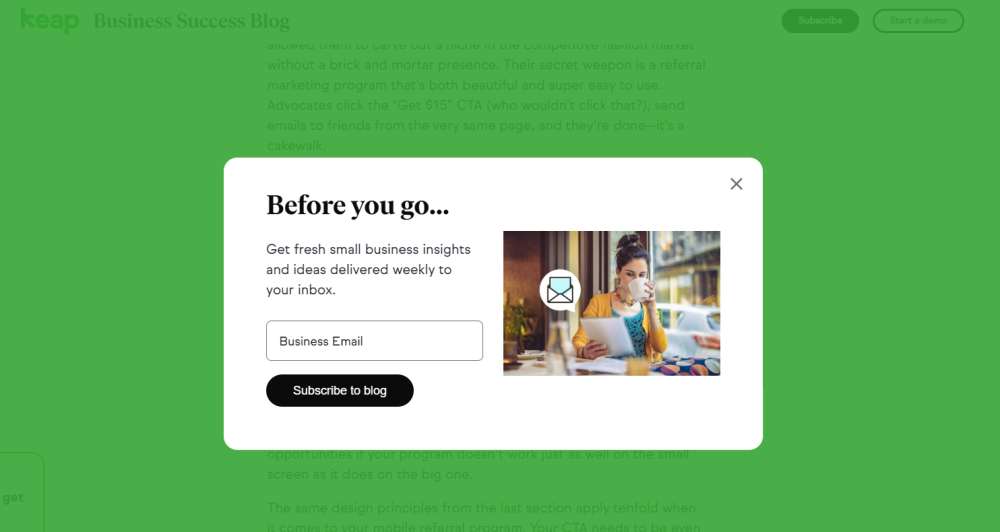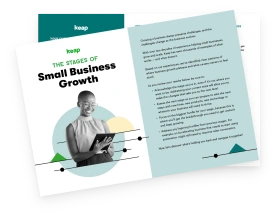Ah the lead generation form, you know the one, that interstitial that pops up on a website when you try to navigate away from the page. It’s not there to inconvenience you, it’s there for a very important reason–companies want to get to know you better by asking for information from you in exchange for the content they’re providing.
That’s a fair trade, is it not? Let’s say you want to register for a webinar, so the company asks you to fill out a form with a series of fields in order to reserve your spot. Maybe you’re looking to download a whitepaper to extend your understanding of a medical issue or a scientific study. The company will always ask for your email address so they know where to send the copy.
These lead magnets are very effective in generating prospects’ interest, but they’re also a strategic way of gathering your leads’ contact information in an effort to keep in touch and foster a relationship for future conversions.
Having inside information on lead form best practices will strengthen your acquisition approaches and attract prospects through an effortless and organic lead generation system.
Why your lead gen form is critical
The lead gen form is not only your gateway to finding prospects, but it’s also an opportunity for prospects to identify themselves so you can reach out and nurture the relationship in relevant and personalized ways through marketing.
Collecting that information at the beginning of the buyer’s journey will help solidify a reciprocal and trusted relationship, in which the lead will feel confident that they’re relinquishing information for a very valued product or service.
Knowing what and how many questions to ask is also imperative. A lot goes into the design and layout of your lead gen form that creates a safe space for the prospect to trust that their personal information isn’t going to be used in an undesirable manner.
How many fields in the form?
This gets tricky because you don’t want your leads to feel as if they’re being interrogated, but you also need to collect the sufficient amount of information that’s directly proportional to what you’re offering.
Consider two factors when creating your lead gen forms: is the priority quantity over quality and what information will be sufficient enough to cultivate a long-term relationship?
Are you asking them to sign up for a newsletter? If so, only their email would suffice.

Keap’s interstitial that appears prior to navigating away from its page. Source: Keap
Are you asking them to create an account for a monthly subscription? If so, you’ll need their full name, billing address, email, and credit card info for the monthly charges. We’re talking anywhere from eight to 10 fields right there.
How about signing up for a webinar? Typically, those forms will request first and last name, email, phone, job title, and organization, plus sometimes they’ll ask for company size and the type of industry. Sometimes they’ll seek information pertaining to the content such as what kind of content management system (CMS) you use or what program you employ to build your website.
According to WPForms, “The average web form length in 2019 was five form fields, which usually result in the highest conversion rates. The mean conversion rate for online forms sits at approximately 21.5% (though this number varies depending on industry).”
Quantity versus quality
This is an existential marketing question: where is the balance between having a sufficient amount of questions that will yield a sufficient amount of information?
The answer should stem from what phase your prospect has reached on their buyer’s journey. Early stages may require fewer fields as opposed to later stage prospects that may use more form fields as an additional qualifier.
Another good indicator of your prospects’ interest and investment of your brand is their commitment to how much information they’re willing to divulge in a given form. It doesn’t hurt to troubleshoot and use your more established prospects as beta testers to see how many fields they’re willing to populate before they bounce.
Consider automation resources
A good way to gauge what information fields to include in your lead form is to consider your back-end resources. What automation systems do you have in place to handle the lead volume?
Automated marketing systems make it easier to implement progressive profiling that’s designed with pre-filled information that has already been collected from a prospect in an effort to avoid asking for repeat information. From there, the forms are programmed to ask for one or two more new pieces of information as a way of still nurturing and keeping touch with leads as they request different pieces of content from your brand.
Content ROI
What is it costing your company to produce this content and are the campaigns effective? What is your lead value for accessing different pieces of content? Is what you’re offering justifying the cost per qualified lead to make it worthwhile?
Cost per qualified lead is a good way to determine a piece of content’s ROI.
Some criteria to keep in mind when determining if fewer or more fields in a lead gen form yield lead quality:
You get what you give
Your relationship with your leads is symbiotic. As a prospect, it’s always a risk to relinquish personal information to a company and trust they won’t sell it or solicit irrelevant information to them going forward. If you want leads to give you a lot of detailed information about them, give them high value content in return.
A visitor who’s willing to identify themselves and fill out a lead gen form is trusting that your company is offering something of value. They’re looking for credible, usable content. Sometimes it’s in the way of a buyer’s guide or a whitepaper. Either of these would be a great piece for a prospect at the top of the funnel.
Strike a balance that provides what the prospect needs in order to move forward against how much it helps your company qualify the lead.
Fewer is more
For those who get intimidated by filling out lengthy forms online, which is most likely the majority of your leads, consider that more form fields don’t necessarily result in more conversions.
Short forms typically yield better results, which gives your company an excuse to reach out at different times to collect more information about them in an effort to stay in contact and keep your brand top of mind.
If your company works with buyer personas, take the time to research and observe the essential types of data it would take to qualify or isolate a lead for more effective nurturing.
If you’re only going to ask for a few pieces of information upfront, make it highly relevant to your sales team. Offer content that reflects lead form best practices with a sufficient number of fields that can do a lot more than just add an email to your prospect list.


